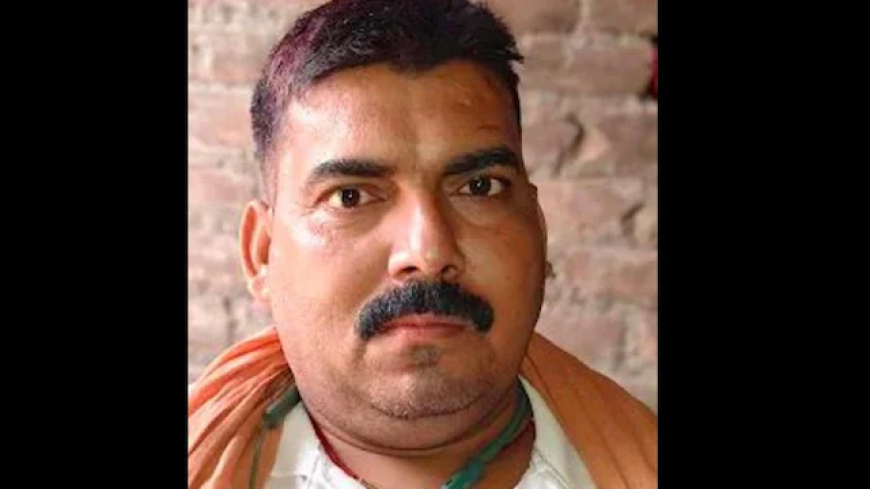Notorious Bihar Gangster W Yadav Shot Dead in Hapur Encounter: Major Win for Inter-State Policing
W Yadav, a wanted gangster from Bihar with a ₹50,000 bounty, was shot dead in an encounter by a joint task force of Uttar Pradesh STF and Bihar Police in Hapur's Simbhaoli. Read the full story.

Hapur, Uttar Pradesh – July 28, 2025
In a decisive move against organized crime, a joint operation by the Uttar Pradesh Special Task Force (STF) and Bihar Police led to the death of W Yadav, a notorious gangster from Bihar who had a bounty of ₹50,000 on his head. The encounter took place early Monday morning in Simbhaoli, a locality in Hapur district, around 80 kilometers from Delhi.
This development marks a significant milestone in inter-state criminal enforcement, as authorities intensify crackdowns on fugitives who cross state boundaries to evade arrest.
The Encounter: What Happened in Simbhaoli
According to senior police officials, the STF had been tracking Yadav’s movements for over a week. Acting on a confidential tip-off, the joint team surrounded a house where Yadav was believed to be hiding. When the police attempted to apprehend him, Yadav allegedly opened fire, prompting retaliatory action.
“He fired several rounds at the officers. In the exchange, he sustained multiple gunshot injuries and was declared dead on arrival at the district hospital,” said a senior STF officer who was part of the operation.
No police personnel were injured in the exchange, though the team reported encountering resistance and risk due to the heavily armed nature of the fugitive.
Who Was W Yadav? A Deep Dive into His Criminal History
W Yadav, whose full name is yet to be officially disclosed, had been a wanted figure in Bihar's criminal landscape for over four years. He was implicated in numerous cases including:
-
Extortion
-
Illegal arms trade
-
Kidnapping for ransom
-
Murder and attempted murder
He was known to operate a gang with cross-border reach, especially active in districts like Patna, Nalanda, and Vaishali. Authorities believe he had close ties with other high-profile crime syndicates operating in Uttar Pradesh and Jharkhand.
Several First Information Reports (FIRs) had been filed against him across various police stations in Bihar, and the state government had recently announced a reward of ₹50,000 for any actionable intelligence leading to his arrest.
Significance of the Operation
The success of this operation is being hailed as a model for inter-state police cooperation. Criminals like W Yadav have long exploited jurisdictional challenges between states to avoid apprehension. By sharing intelligence and forming joint task forces, both UP and Bihar police are now coordinating efforts more effectively.
“This is a clear message that borders between states won’t shield criminals anymore,” said an official from Bihar Police, speaking on condition of anonymity. “We’re working closely with our counterparts to ensure no safe haven exists for fugitives.”
Political and Public Reactions
Local lawmakers from both states have praised the police action, calling it a step forward in restoring public trust and safety. Community members in Hapur and parts of Bihar have expressed relief at the news, especially those who had faced intimidation and threats from Yadav’s gang in the past.
However, some civil rights activists have raised concerns about the increasing frequency of encounters and called for judicial oversight to ensure procedural fairness. The UP STF has maintained that standard protocols were followed, and the encounter was a legitimate response to armed resistance.
Next Steps in the Crackdown on Organized Crime
With Yadav’s death, law enforcement agencies are now focusing on dismantling his remaining network. Several of his known associates are under surveillance, and more arrests are expected in the coming weeks.
The forensic team has collected evidence from the encounter site, including weapons, mobile phones, and documents that could potentially unravel a larger nexus of crime spanning multiple states.
Meanwhile, a formal report of the operation has been submitted to both state governments and the Ministry of Home Affairs.
Conclusion
The killing of gangster W Yadav in Hapur represents more than just the end of a fugitive’s life—it underscores a growing synergy among state police forces determined to clamp down on organized crime in India. As the investigation continues, the operation sends a clear message: criminals can no longer hide behind state boundaries.


















































